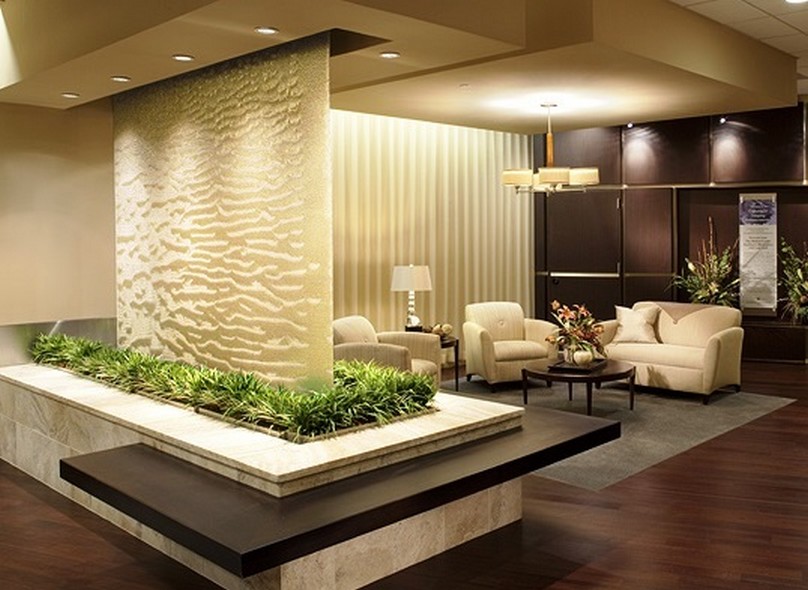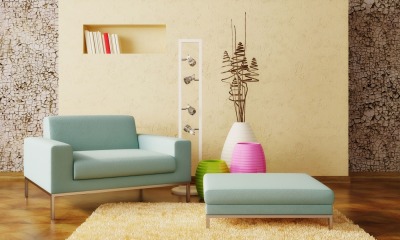Home Improvement
How To Choose The Right Indoor Fountain For Your Property

Indoor water fountains are popular these days for both residential and commercial properties. Fountains make excellent additions to any room thanks to the aesthetic appeal they add and the calming effects they have on people. It’s one of the first things that people will notice when they enter an area and it’s one of the few furnishings that will leave a lasting impression on guests after trhey leave.
Contrary to popular notion, fountains don’t always have to cost a limb to install. In fact, the price for having one in your home or building can vary greatly based on a number of factors. It’s actually pretty realistic for a person living in a condominium or a suburban home to have a fountain that the inhabitants will be happy with.
The tricky part is in choosing the right indoor fountain for your place. With thousands of designs and several general types, it’s easy to get overwhelmed and make a mistake. Fortunately, you can narrow down your choices based on a few vital criteria. If you’re considering the addition of an indoor fountain to your home or workplace, here are things you need to ponder so you can arrive at the best possible choice:
- Your Goals – The first thing to determine is your goal for getting a fountain. Whether it’s for design, relaxation or Feng Shui purposes, you need to be honest with yourself. Communicating your goal to your designer and utility people will allow them to guide you on where the fountain can be placed, what materials it should be made of, and what type of fountain you should get. Other details such as the volume of the flowing water and the noise that it creates will depend on your goals and expectations.
- Material–The material that you choose will determine the kind of motifs that the fountain will fit into. For instance, more classic designs are often made of stone or ceramic. Modern designs, on the other hand, are better complemented by glass and metal fountains. Depending on the material subtype you choose, costs can go higher or lower. Specialty materials that simulate stone are usually more affordable, while stainless steel can be more expensive than other metals.
- Size–The size of the indoor fountain you get should be based primarily on the area of the room where it’ll be installed. Tabletop and wall fountains are small and can be set up even in smaller spaces. Floor fountains, on the other hand, are much larger and will require more real estate.
- Lighting – Indoor fountains need light to come in just the right amounts and from the right light angles in order to look their very best. Light may be natural or artificial, but its position relative to the indoor fountain needs to be strategic in order to achieve the desired effect. An interior designer may be able to suggest a good setup to optimize lighting conditions.
- Room Users and Purpose–The kind of fountain you get will also depend on the use of the room you want to have it in. Smaller wall fountains are ideal for bedrooms to help people relax. They can also be used in meeting rooms to calm the nerves and put everyone at ease. Larger fountains that jet greater volumes of water and make larger sounds are better suited for the lobbies of commercial areas where you want to promote higher energy and greater dynamism among people.
- Upfront Costs–Upfront costs include the purchase of the fountain itself, the fees you’ll pay the installers and the additional construction work that might arise from it. Like the cost of the indoor fountain, the cost of installing it can vary substantially depending on the kind of fountain you want. Small tabletop fountains will barely cost anything and can become a DIY job if you have the right skills. However wall and floor fountains require a little more specialized knowledge and tools to set up.
Before ordering a fountain, consult your preferred installation service on the service costs. If the fountain vendor provides the service, get a complete quote from them.
- Maintenance Costs – Keep in mind that you’ll have to spend on your fountain even after it’s been installed. Cleaning and unclogging work needs to be done on a regular basis to keep it in good condition.
Professionals recommend using distilled water in your fountains due to their low particle content. This minimizes the buildup of debris in its water nozzles, helping you to keep your fountain clog-free for longer periods of time.
Ultimately, choosing the right fountain comes down to a balance between purpose, personal taste and budget. As long as you get something that fits nicely in these three areas, you should be able to get one that’s satisfactory to you.
-

 Tech11 years ago
Tech11 years agoCreating An e-Commerce Website
-

 Tech11 years ago
Tech11 years agoDesign Template Guidelines For Mobile Apps
-

 Business6 years ago
Business6 years agoWhat Is AdsSupply? A Comprehensive Review
-

 Business10 years ago
Business10 years agoThe Key Types Of Brochure Printing Services
-

 Tech8 years ago
Tech8 years agoWhen To Send Your Bulk Messages?
-

 Tech5 years ago
Tech5 years ago5 Link Building Strategies You Can Apply For Local SEO
-

 Law5 years ago
Law5 years agoHow Can A Divorce Lawyer Help You Get Through Divorce?
-

 Home Improvement6 years ago
Home Improvement6 years agoHоw tо Kеер Antѕ Out оf Yоur Kitсhеn











































